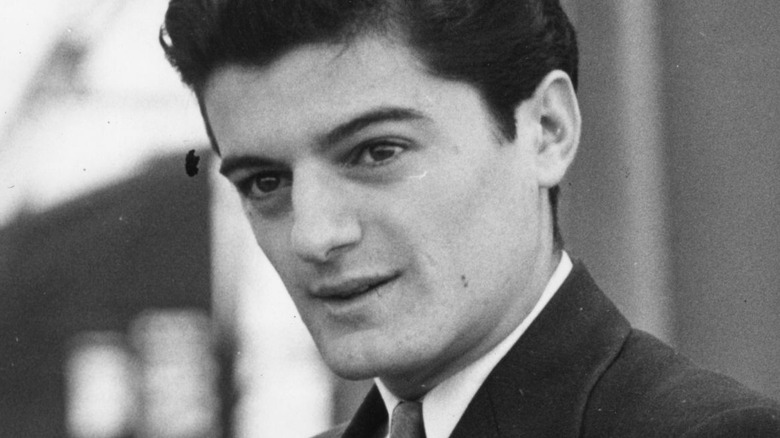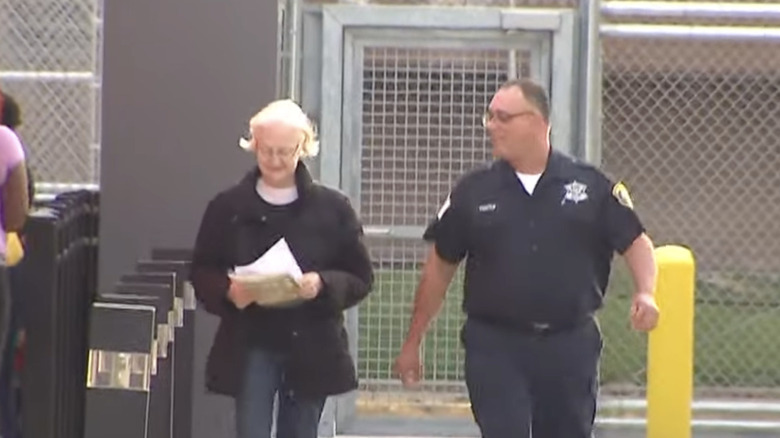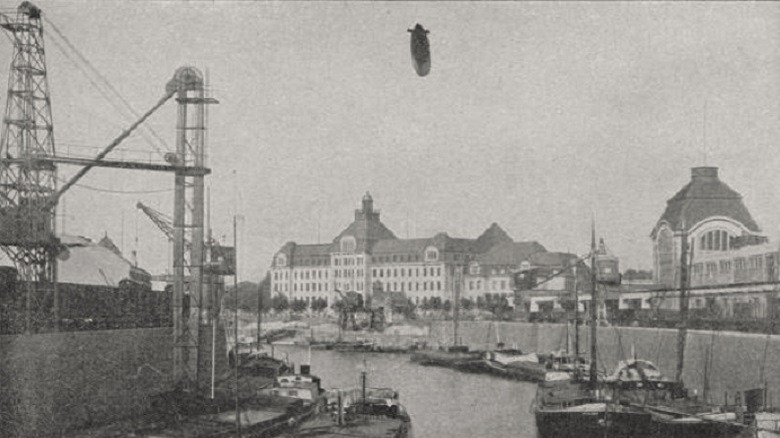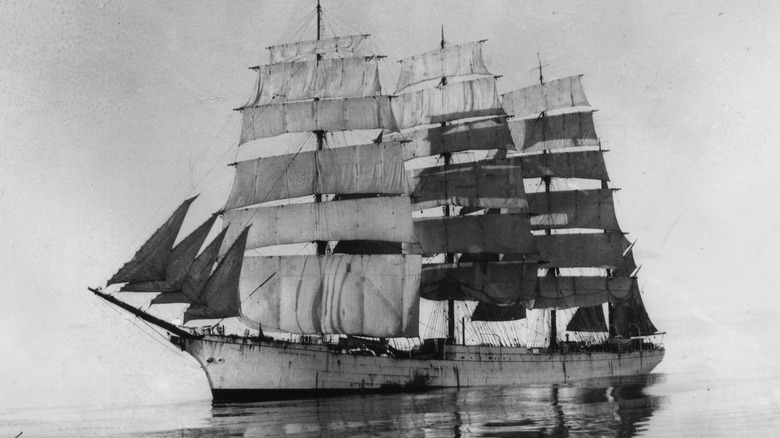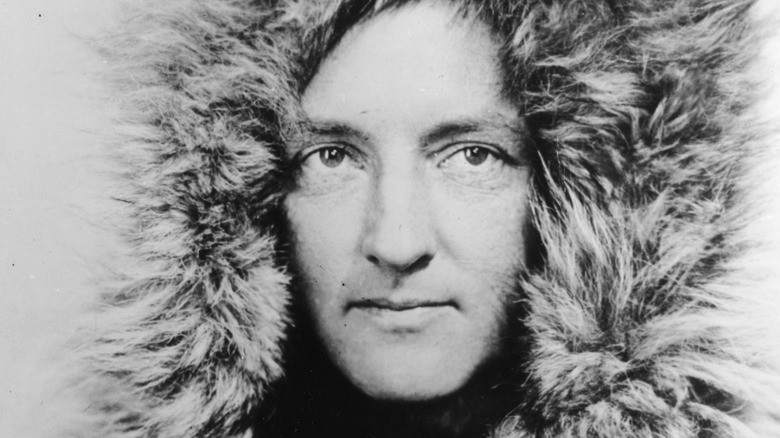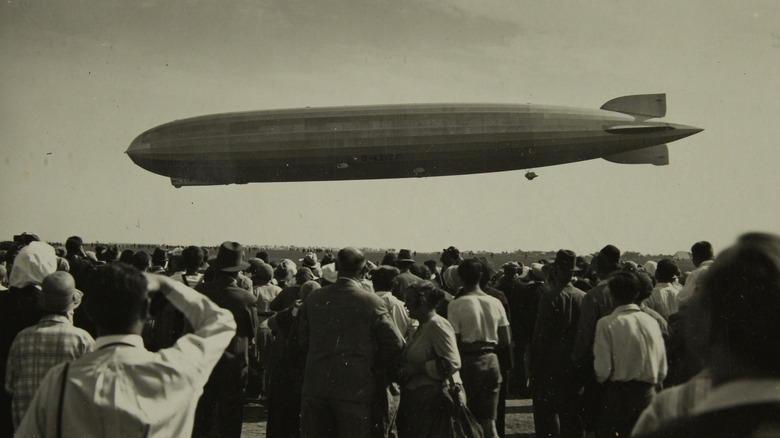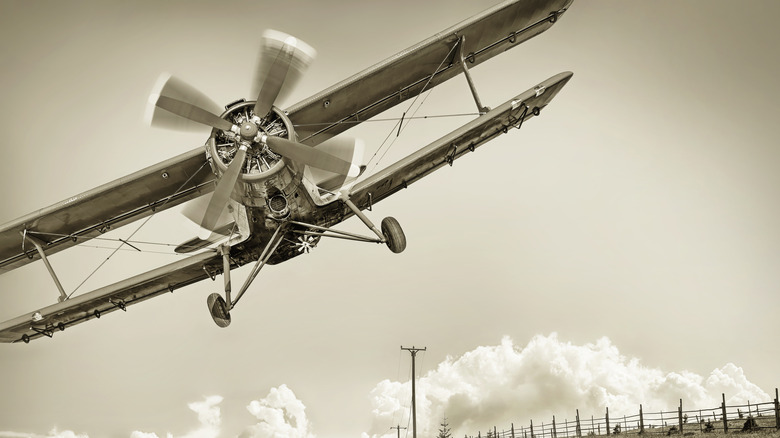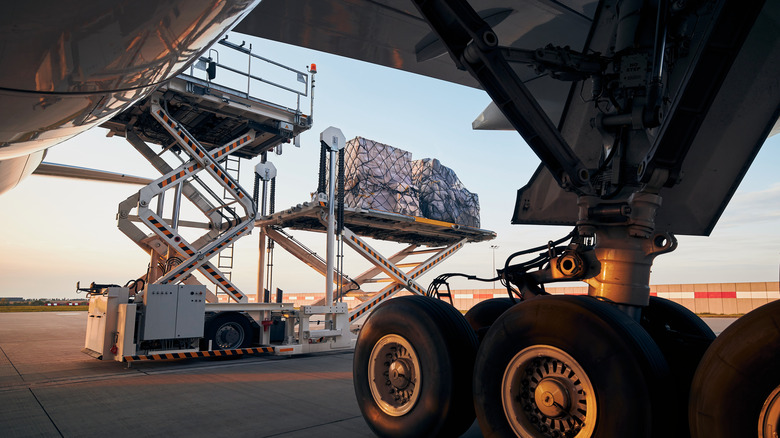Stowaways Whose Stories Didn't End In Disaster
Stowaways are as old as the human technologies permitting people to traverse land, cross oceans, and jet across skies. According to the Online Etymology Dictionary, there was no term for the concept in English until 1848. Yet, by the end of the same century, stowaways marked a regular part of immigration to America's East Coast. While many people immediately think of maritime stories and ships when they hear the word "stowaway," you'll be surprised to know that people have attempted to stowaway on just about every machine that moves individuals from location A to location B. In the process, stowaways have enjoyed varying results.
Dig a little deeper, and you'll even find tales of desperate individuals who've attempted to hitch a ride on airline flights by concealing themselves in landing gears. Of course, it doesn't get much riskier. For example, most individuals who attempt to fly this way end up frozen to death, crushed, or dead from lack of oxygen at 40,000 feet, per The Guardian. Not a pleasant thought.
That said, now and again, a stowaway gets dealt a lucky hand, and their story has a happy ending. From ship stowaways to the rare airplane hitchhiker and even dirigible travelers, check out these fantastic stories of stowaways who somehow avoided tragedy.
California to Hawaii at 38,000 feet
For hundreds of years, stowaways were romanticized in literature as swashbucklers, heroes, and rogues. Sailing into the sunset (unbeknownst to the other occupants of the ship), countless literary, television, and movie characters have launched adventures this way. But there's nothing to romanticize when it comes to modern-day stowaways. After all, it's one thing to hide out in the hull of a ship behind a crate of goods, and it's quite another to squeeze into the landing gear of a plane.
Yet, that's exactly what one 16-year-old boy did in April 2014, as reported by NY Daily News. Stowing away in the plane's landing gear from California to Hawaii, things turned life-threatening quickly. Despite the odds, he avoided getting crushed by the wheels as they retracted into the landing gear. But the dangers didn't stop there. As the flight ascended, he faced a lack of oxygen and frigid temperatures as the plane reached 38,000 feet. If these conditions weren't bad enough, try multiplying them by five hours!
Not surprisingly, the young man didn't remember much of Hawaii Airlines Flight 45 (via CNN). Tom Simon, an FBI spokesman in Honolulu, noted that "he was unconscious for the lion's share of the flight." He also made it clear, the boy's survival marked a veritable miracle. How did the young stowaway get discovered? After landing, airport personnel noticed the boy loitering on the ramp. They notified security, and he was transported by ambulance to a local hospital for evaluation.
From stowaway to explorer
Some stowaways prove lucky to be alive, while others use their experiences to escape life's circumstances and start fresh. The best ones recognize opportunities when they see them and turn them to their advantage. Such is the case with Vasco Núñez de Balboa, who stowed away in a flour barrel on a ship headed to Panama's San Sebastián de Urabá in 1509 (via Britannica).
Balboa left behind mounting debt and a pig farm that didn't break even. After discovery, Balboa charmed the ship's captain, Martín Fernández de Enciso, to let him stay on board as they headed on a mission to find the survivors of Francisco Pizarro's colony. After locating the colonists, they moved to the colony of Darién.
But the colonists ended up overthrowing Enciso, and Balboa became one of its temporary governors, as reported by the Ages of Exploration. After Enciso departed for Hispaniola, Balboa rose through the ranks, becoming the colony's leader. By 1511, King Ferdinand declared Balboa the captain-general and interim governor of Darién. Besides helping to found South America's first stable settlement, Balboa also became the first European to see the Pacific Ocean. He did this with the help of indigenous guides who revealed the way.
The serial airplane stowaway
Not all airplane stowaways hide in plane landing gears. Some, like Marilyn Hartman, have mastered the art of blending in to gain access to airplane transportation, per the New York Times. Arrest records show Hartman has attempted to sneak on planes since at least 2009 with mixed results. As a result, she's earned the title "serial stowaway," and she's got the escapades to prove it.
Of course, the infamy of the "serial stowaway" status should have brought her flight-hopping antics to an end. After all, airports have filed restraining orders against her, and her portrait graces many TSA offices. Nevertheless, she still sometimes manages to get through security. In 2018, she saw far more success than many of her previous attempts, managing to fly to London Heathrow International Airport (via the Chicago Tribune).
How did she stow away without a ticket? By spiriting past two TSA officers with her hair in her face and then boarding a shuttle bus to the international terminal. After camping overnight in the terminal, she snuck onto a London-bound flight and successfully took off with the plane. But London's customs proved too much for the serial stowaway. Pulled aside for lack of correct documentation, Hartman was eventually flown back to O'Hare, where she had departed the previous day. All told, Hartman has been involved in at least 22 airport incidents.
The first airship stowaway made headlines
Apart from the occasional Goodyear Blimp, dirigibles or airships prove a rare sight in the 21st century. Yet, 100 years ago, these feats of technology regularly crossed the skies, providing opulent, spacious, and stylish transportation. Because of their unique propulsion systems, they traveled at pleasant speeds of up to 84 miles per hour. While airships would never compete with the speed of planes, that was never the ultimate objective. Instead, airships offered spacious accommodations and optimal sightseeing experiences. And they weren't plagued by roaring engines like other forms of travel.
According to Popular Science, "Dirigibles were poised for ubiquity. They would replace ocean liners as the luxury Transatlantic vessel of choice." But several vulnerabilities plagued these great flying whales, including susceptibility to ground winds, thunderstorms, and fires. Nothing better illustrated this than the tragic Hindenburg disaster on May 6, 1937.
But before earning an irreparably bad reputation, people dreamed of traveling on airships. So, it's little wonder that airship stowaways would emerge. Who was the first airship stowaway? According to the New York Times, Hans Groan stole aboard the dirigible balloon Parseval VI (pictured) in October 1910, hiding beneath tarpaulin covering thrown over a benzine tank. According to a Nelson Evening Mail article dated November 16, 1910, "Groan crawled out of his hiding place, and, revealing himself to his astonished fellow-travelers, gracefully apologized for his presence."
Music teacher turns stowaway
During the 1920s, nothing sold newspapers like the tale of a stowaway. People the world over devoured such stories, living vicariously through the adventurous souls described. Among the most interesting accounts of the Jazz Age? The story of Jeanne Day, an Australian music teacher and "brave bohemian" (via the New Yorker).
After cropping her dark auburn hair, she snuck onto the "Herzogin Cecilie" (pictured) bound for England, some 14,000 miles away (via Submerged). According to "Alan Villiers: Voyager of the Winds" by Kate Lance, Day was unlike any woman the crew had encountered before. After making her presence known to the ship's crew members, she quickly adapted to life onboard the racing vessel. Not one to shy away from hard work, Day earned the crew's respect and a position as a cabin hand.
What did Day think about her time working as a crew member on the "Herzogin Cecilie"? In a letter to the editor from Day, she would later write of the voyage, "To me the three months sea voyage was the most beautiful thing that has ever happened; I loved every instant of it," per the National Library of Australia.
A stowaway's crazy flight on a royal airline
In 2010, a 20-year-old Romanian man stowed away in the undercarriage of a jet owned by the Dubai royal family on an 800-mile trip from Vienna, Austria, to London, United Kingdom (via MyLondon). Crouched in the rear wheel compartment, he survived the 97-minute plane flight for one lucky reason. Thunderstorms forced the plane to fly lower than its usual 37,000 feet.
What happened when the jet finally touched down at Heathrow? Unlike many stowaways who immediately get shipped back home, the Romanian man was permitted to stay. Why? Because he had proof of European Union citizenship, as reported by the Evening Standard.
What motivated the man to take such a grave risk to reach the UK? While getting interviewed by authorities, he cited the desire to find a job as his top priority. But we may never know what became of the man. When law enforcement did a welfare check, he had vanished.
The stowaway who ended up in Antarctica
Seventeen-year-old high schooler Billy Gawronski snuck on board Richard Byrd's ship headed to Antarctica on three separate occasions as it sat harbored on New York's Hudson River in 1928, according to National Geographic. Each time he got caught. But on the third occasion, Byrd (pictured) had a proposition for the young man: a job as a mess boy on the expedition.
The boy's parents had other plans, though. They had their son arrested for truancy. But Byrd interceded, gaining permission from Gawronski's father for the boy to go. Gawronski's determination earned him the title of "The Happiest Boy in the World." Despite being the youngest crew member on Byrd's first Antarctic expedition, Gawronski pulled his weight and more. According to Ohio State University, he proved a hard worker with a cheerful personality despite the privations and hardships the team faced. Gawronski also had courage in spades. At one point, he even dove without hesitation into the Ross Sea to rescue a fellow crew member.
Returning to great fanfare and celebrity (via the Wall Street Journal), Gawronski went on many more adventures. Still, he wondered why Byrd never invited him on a second Antarctic expedition. Researcher Gwen Shapiro, author of "The Stowaway," stumbled across the answer while reviewing Byrd's correspondences. Gawronski's mother made Byrd promise he'd never take her son on another voyage.
The stowaways who chose planes, trains, and automobiles
Two preteen boys pulled off an ambitious series of stowaways after leaving Dublin, Ireland in 1985. The boys, Noel Murray (13) and Keith Byrne (10), stowed away or hitchhiked on a boat, bus, train, and car, making their way to Heathrow Airport (372 miles away). There, they pulled off the greatest coup of all, hopping on a flight to JFK International Airport in New York.
Intercepted by authorities at the New York airport, law enforcement reported being tipped off by their disheveled appearances. Although the boys had answers for every question posed by law enforcement, they eventually caved to the grilling, detailing their incredible journey from Ireland to the United States. As reported by the Ottawa Citizen on August 20, 1985, Lieutenant Richard Richards of the NYPD notes, "These kids were good, street-wise, tough, they could lie through their teeth, but you got to hand it to them."
What sparked the travel bug in these two boys? Fans of the "A-Team," the boys hoped to search out and find Mr. T, their favorite character. But how did the boys manage to sneak on the plane at all? As Byrne recalls, "The plane was only half full so no one came near us" (via the Irish Post).
The young zeppelin-hopping stowaway
By the age of 19, Clarence Terhune already proved an inveterate stowaway. From ships to trains, he'd found ways to gain passage on various forms of transportation without paying a dime. And he also made crashing sporting events a regular part of his bag of tricks, according to Blimp Info. But he couldn't claim credit for coming up with the idea of stowing away on the Graf Zeppelin during its maiden voyage.
Nope, that came from his brother-in-law by way of a bet. Did it involve any "triple-dog-dares"? Who can say for sure? But whatever the case, Terhune took the bait, ending up on a flight from New Jersey to Friedrichshafen, Germany in 1928, according to the New York Times.
A golf caddy from St. Louis, Missouri, Terhune kept busy on the flight doing odd jobs and helping out the crew. He earned their respect along the way. Upon arrival in Germany, Terhune got arrested, but it didn't deter the German people from celebrating him as a hero. He soon found himself the recipient of endless job offers, dinner invitations, and fan telegrams. According to the Chillicothe Constitution-Tribune, "The daring of the boy's feat thrilled the Germans and gave them a good chuckle."
The 'Silk-Stockinged Stowaway'
At the height of the Great Depression in 1934, Carroll L. Wainwright, Jr., provided a welcome diversion when he stole aboard the SS Queen of Bermuda, per the New York Times. The great-grandson of Jay Gould, the famed financier, Wainwright was just eight years old. Unhappy with life in Bermuda, he longed to visit his grandmother in New York. Stowing away seemed the perfect way to do this.
At first, the boy's disappearance made people fear the worst. After all, the kidnapping and murder of Charles Lindbergh's infant son still loomed in the public's mind. But fortunately, this tale of a tiny stowaway came with a happy ending. About three hours after the ship departed, Wainwright came out of hiding with a rumbly tummy. While the boy ate, the ship's crew messaged back to Bermuda, letting all know the little boy was fine.
Because of his affluent family, Wainwright quickly earned the name "the Silk-Stockinged Stowaway" (via the Royal Gazette). The charming and adorable boy soon captured the hearts of the public. At the end of his adventure, Wainwright declared the captain "a grand guy" and exclaimed, "Gee, I had a swell time."
Learning endurance as a stowaway on the 'Endurance'
In 1914, 18-year-old Perce Blackborow stowed away on Sir Ernest Shackleton's ship, the Endurance, bound for Antarctica (via the South Wales Argus). Hiding out in a locker, he strategically remained hidden until the crew was too far out to sea to turn back.
What happened when Shackleton and his crew discovered the stowaway? According to Aeon, Shackleton confronted the teen, famously asking, "Do you know that on these expeditions we often get very hungry, and if there is a stowaway available, he is the first to be eaten?" Not one to be intimidated, Blackborow replied, "They'd get a lot more meat off you, sir." The gutsy response revealed much about the young man's character and courage. Shackleton assigned him a job in the kitchen, and the young man soon became an integrated and beloved member of the crew, as reported by Cool Antarctica.
What started as a youthful adventure turned into a test of endurance after the Endurance became trapped in ice. Over time, the ice crushed the ship until it eventually sank, leaving the crew in a life-or-death struggle. During the ordeal, Blackborow even lost some toes to frostbite, but he survived the ill-fated journey, returning to a hero's welcome.
Sneaking onto the Yellow Bird
On June 13, 1929, the Yellow Bird took off from Old Orchard Beach, Maine, on a transatlantic flight attempt, per History Net. Racing against the French-crewed Yellow Bird was the Green Flash, crewed by an American team. Led by Armand Lotti, the Yellow Bird crew dedicated their flight to famed pilot Charles Lindbergh who crossed the Atlantic on a solo flight just two years earlier.
Although the media hyped up the notion of a race between nations, the Yellow Bird and the Green Flash were bound for different destinations, Paris and Rome, respectively. So, their flights didn't really represent a race at all. Nevertheless, Lotti planned to laud the end of the flight, packing whiskey for a celebratory toast on the Continent. Unfortunately, the crew of the Yellow Bird noticed a problem during takeoff. Inexplicably, the plane seemed heavy and sluggish, barely lifting off. Twenty minutes into the flight, Lotti and his crew found out why.
A 22-year-old stowaway by the name of Arthur Schreiber wiggled free of the tail where he'd hidden. According to crew member Jean Assolant, "We were unable to decide whether to strangle our stow-away or drop him out into the ocean or leave him in his cubby hole" (via Jewish Telegraphic Agency). Instead, Schreiber proved himself a fantastic "crew member" and won acclaim and praise in international newspapers.
The stowaway that clinched a scholarship
A 14-year-old Nigerian teen, Daniel Ihekina, managed to sneak through security at the Benin City Airport and onto the undercarriage of an airplane, which he hoped was headed to the United States. Fortunately, he made a big mistake, ending up on a short flight to Lagos that never exceeded 21,000 feet, according to OnoBello.
How did the airline find out about Ihekina's escapades? Passengers alerted the airline after seeing the boy wandering on the tarmac. As reported by Reuters, the airline's head of communications, Ola Adebanji has emphasized, "How he got through security is something for the authorities to investigate. He's lucky to have survived it. Not many people can do that and survive."
Although Ihekina proved disappointed that the plane never left Nigeria, his escape attempt won the attention of the Edo State Government, who awarded him a scholarship to one of the nation's most prestigious schools. Why the award for Ihekina? According to Modern Ghana, Adams Oshiomhole, Edo state governor said, "Without meaning to encourage anyone else, we decided to support him by sending him to one of the top secondary schools in Edo State that is owned by the Government."
